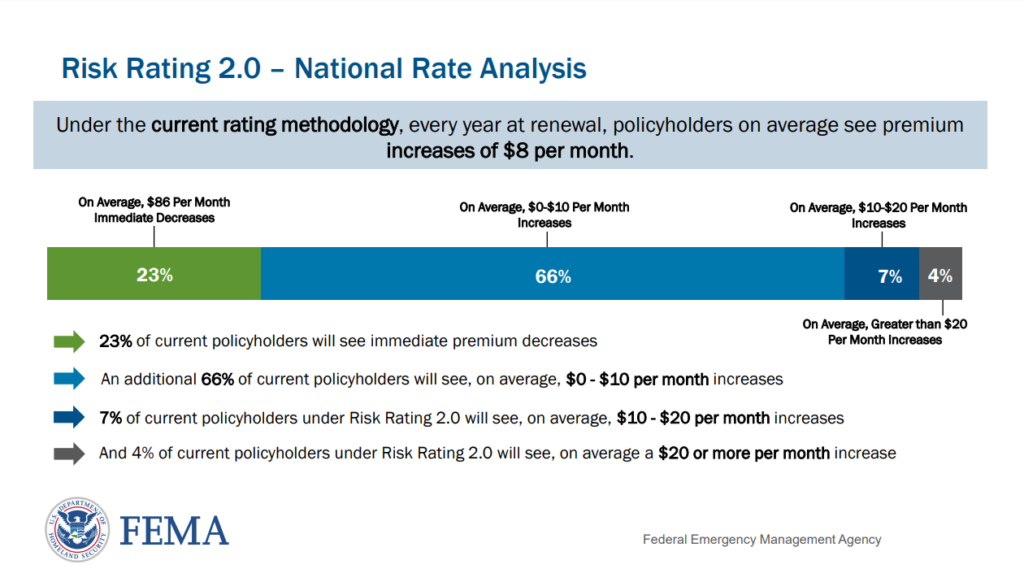FEMA Flood Risk Rating Changes
Atlantic hurricane season is underway, but it doesn’t take a hurricane to cause a flood event. Flooding tops the list as the most common natural disaster in the United States and can happen anywhere. The aftermath of a flood event can be devastating emotionally and financially. The Federal Emergency Management Agency (FEMA) says just one inch of water in a structure can cause up to $25,000 of damage.
Even if your home or business isn’t near a flood zone, securing an adequate flood insurance policy could be a lifesaver when dealing with a natural disaster. FEMA is launching a program this fall that could change how homeowners pay for their flood insurance policies.
FEMA will roll out a new rating system for the National Flood Insurance Program (NFIP), Risk Rating 2.0.
According to FEMA, Risk Rating 2.0 allows the agency to better inform individuals and communities about flood risk, set premiums to signal those risks, and promote actions to mitigate against them. Individuals will no longer pay more than their fair share in flood insurance premiums.
Here’s what you need to know about Risk Rating 2.0:

- In Phase I: New policies beginning Oct. 1, 2021, will be subject to the Risk Rating 2.0 rating method. Also, beginning Oct. 1, existing policyholders eligible for renewal will take advantage of immediate decreases in their premiums.
- In Phase II: All policies renewing on or after April 1, 2022, will be subject to the Risk Rating 2.0 rating method.
Conclusion
The NFIP’s current rating methodology has not changed since the 1970s and does not consider individual flood risk and underlying home values. Risk Rating 2.0 will change the way FEMA views flood risk and prices flood insurance.
FEMA continues to engage with Congress, its industry partners and state, local, tribal and territorial agencies to ensure clear understanding of these changes.
It’s critical to work with industry experts who have the necessary knowledge and experience.
Contact a team member near you at INSURICA.com/our-team to learn more about flood insurance or assist you with your current policy.
About the Author
Share This Story
Related Blogs
Personalization Now a Baseline Expectation in Employee Benefits
In 2025, personalization has moved from “nice to have” to “non-negotiable.” Employees expect benefits that reflect their individual needs, values, and life stages. Static, one-size-fits-all plans are being replaced by flexible, modular offerings that empower employees to choose what matters most.
Fertility, Family Planning, and Parental Leave Are Front and Center
In 2025, family-building support has emerged as a defining priority in employee benefits strategy. Fertility coverage, inclusive parental leave, and caregiving support are no longer niche offerings — they’re central to how employees evaluate workplace value. As life paths diversify and caregiving responsibilities expand, benefits managers are rethinking what it means to support the whole employee.
Gag Clause Attestation Deadline: December 31, 2025
Employer-sponsored group health plans must submit their 2025 Gag Clause Prohibition Compliance Attestation (GCPCA) to CMS by December 31, 2025, to confirm compliance with federal transparency rules. This annual filing covers the 2024 calendar year and applies regardless of employer size or funding arrangement.






